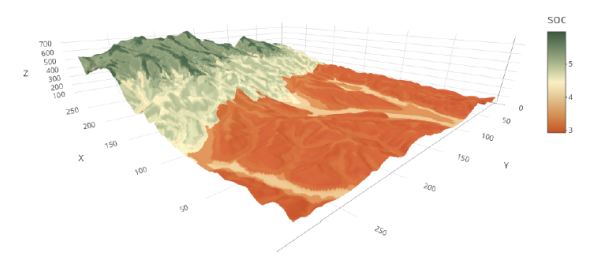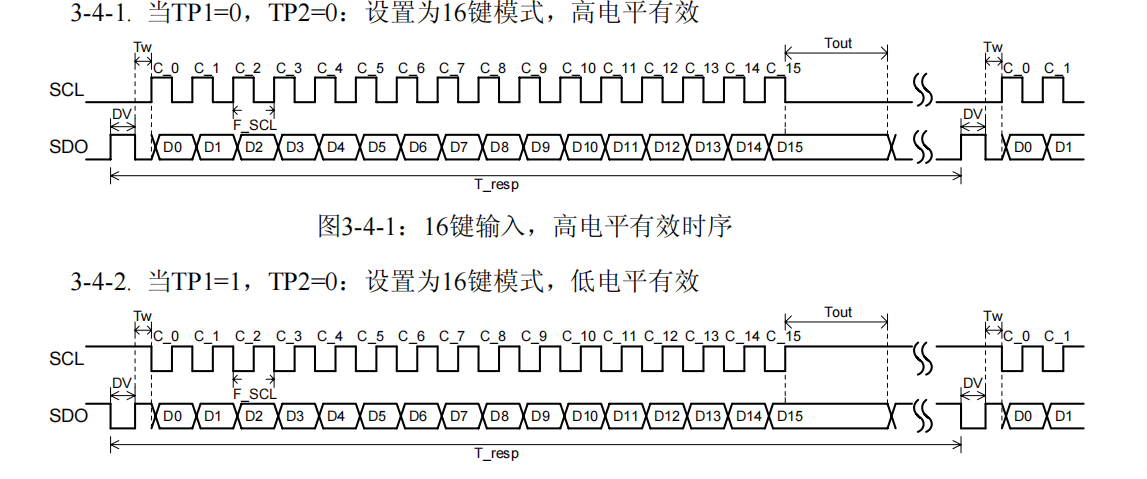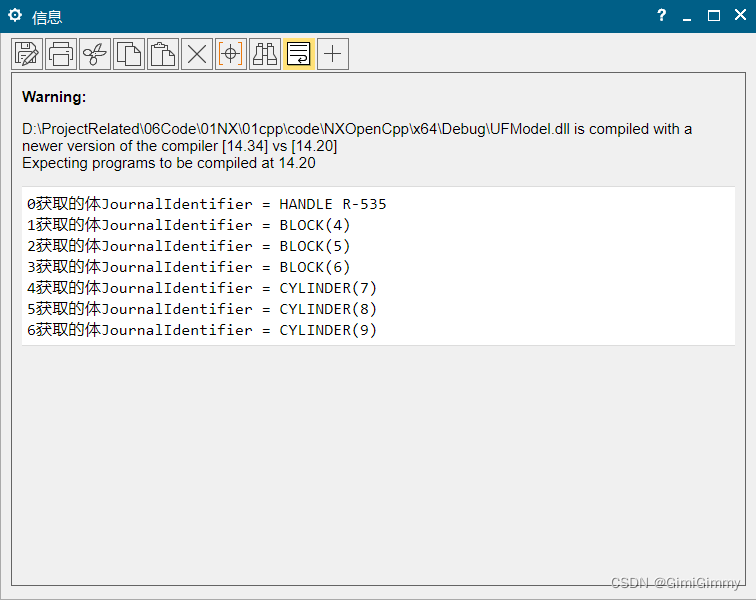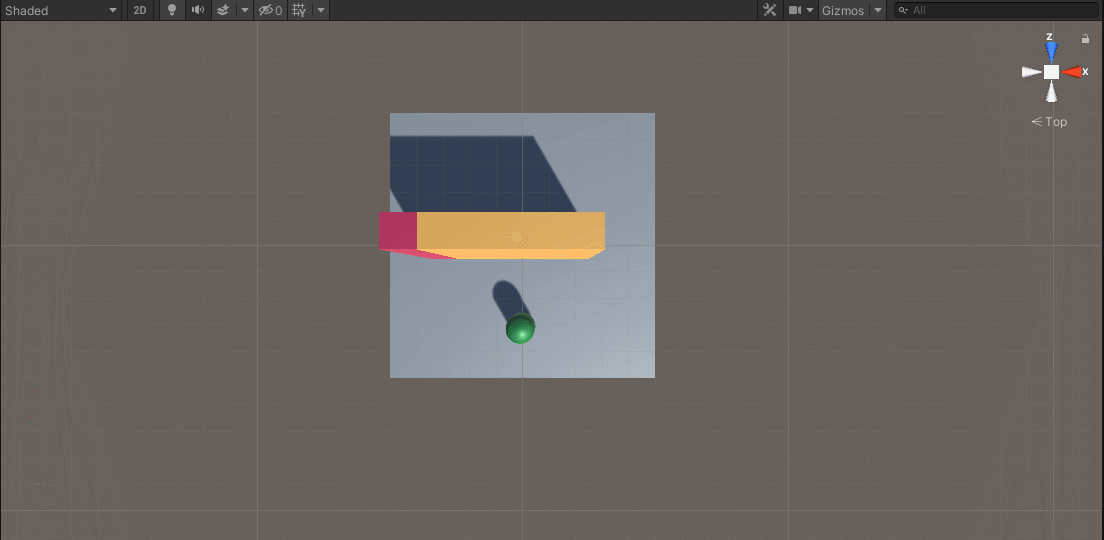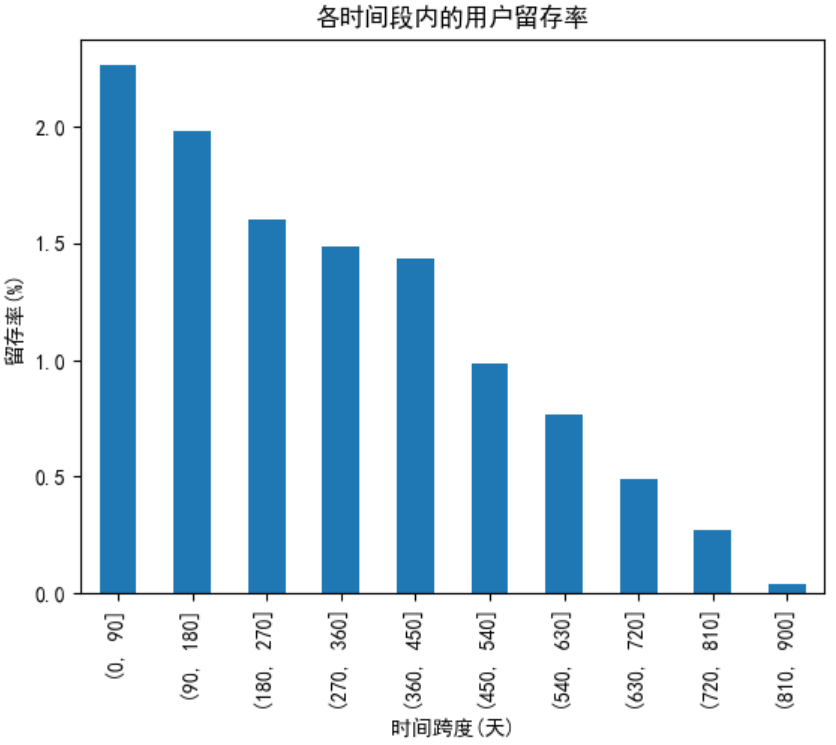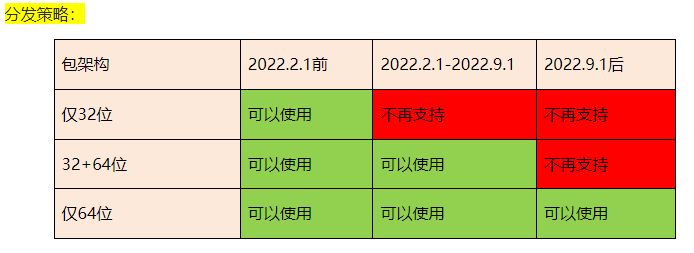定义于头文件 <vector>
| template< class T, | (1) | |
| namespace pmr { template <class T> | (2) | (C++17 起) |
1) std::vector 是封装动态数组的顺序容器。
2) std::pmr::vector 是使用多态分配器的模板别名。
| 元素相继存储,这意味着不仅可通过迭代器,还能用指向元素的常规指针访问元素。这意味着指向 vector 元素的指针能传递给任何期待指向数组元素的指针的函数。 | (C++03 起) |
vector 的存储是自动管理的,按需扩张收缩。 vector 通常占用多于静态数组的空间,因为要分配更多内存以管理将来的增长。 vector 所用的方式不在每次插入元素时,而只在额外内存耗尽时重分配。分配的内存总量可用 capacity() 函数查询。额外内存可通过对 shrink_to_fit() 的调用返回给系统。 (C++11 起)
重分配通常是性能上有开销的操作。若元素数量已知,则 reserve() 函数可用于消除重分配。
vector 上的常见操作复杂度(效率)如下:
- 随机访问——常数 O(1)
- 在末尾插入或移除元素——均摊常数 O(1)
- 插入或移除元素——与到 vector 结尾的距离成线性 O(n)
std::vector (对于 bool 以外的 T )满足容器 (Container) 、具分配器容器 (AllocatorAwareContainer) 、序列容器 (SequenceContainer) 、连续容器 (ContiguousContainer) (C++17 起)及可逆容器 (ReversibleContainer) 的要求。
迭代器
返回指向容器第一个元素的迭代器
std::vector<T,Allocator>::begin,
std::vector<T,Allocator>::cbegin| iterator begin(); | (C++11 前) | |
| iterator begin() noexcept; | (C++11 起) | |
| const_iterator begin() const; | (C++11 前) | |
| const_iterator begin() const noexcept; | (C++11 起) | |
| const_iterator cbegin() const noexcept; | (C++11 起) |
返回指向容器首元素的迭代器。
若容器为空,则返回的迭代器将等于 end() 。

参数
(无)
返回值
指向首元素的迭代器。
复杂度
常数。
返回指向容器尾端的迭代器
std::vector<T,Allocator>::end,
std::vector<T,Allocator>::cend| iterator end(); | (C++11 前) | |
| iterator end() noexcept; | (C++11 起) | |
| const_iterator end() const; | (C++11 前) | |
| const_iterator end() const noexcept; | (C++11 起) | |
| const_iterator cend() const noexcept; | (C++11 起) |
返回指向容器末元素后一元素的迭代器。
此元素表现为占位符;试图访问它导致未定义行为。

参数
(无)
返回值
指向后随最后元素的迭代器。
复杂度
常数。
返回指向容器最后元素的逆向迭代器
std::vector<T,Allocator>::rbegin,
std::vector<T,Allocator>::crbegin| reverse_iterator rbegin(); | (C++11 前) | |
| reverse_iterator rbegin() noexcept; | (C++11 起) | |
| const_reverse_iterator rbegin() const; | (C++11 前) | |
| const_reverse_iterator rbegin() const noexcept; | (C++11 起) | |
| const_reverse_iterator crbegin() const noexcept; | (C++11 起) |
返回指向逆向容器首元素的逆向迭代器。它对应非逆向容器的末元素。

参数
(无)
返回值
指向首元素的逆向迭代器。
复杂度
常数。
返回指向前端的逆向迭代器
std::vector<T,Allocator>::rend,
std::vector<T,Allocator>::crend| reverse_iterator rend(); | (C++11 前) | |
| reverse_iterator rend() noexcept; | (C++11 起) | |
| const_reverse_iterator rend() const; | (C++11 前) | |
| const_reverse_iterator rend() const noexcept; | (C++11 起) | |
| const_reverse_iterator crend() const noexcept; | (C++11 起) |
返回指向逆向容器末元素后一元素的逆向迭代器。它对应非逆向容器首元素的前一元素。此元素表现为占位符,试图访问它导致未定义行为。
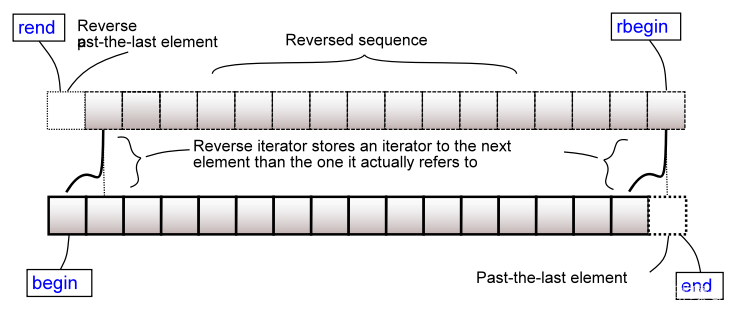
参数
(无)
返回值
指向末元素后一元素的逆向迭代器。
复杂度
常数。
调用示例
#include <iostream>
#include <string>
#include <iterator>
#include <algorithm>
#include <functional>
#include <time.h>
#include <vector>
using namespace std;
struct Cell
{
int x;
int y;
Cell() = default;
Cell(int a, int b): x(a), y(b) {}
Cell &operator +=(const Cell &cell)
{
x += cell.x;
y += cell.y;
return *this;
}
Cell &operator +(const Cell &cell)
{
x += cell.x;
y += cell.y;
return *this;
}
Cell &operator *(const Cell &cell)
{
x *= cell.x;
y *= cell.y;
return *this;
}
Cell &operator ++()
{
x += 1;
y += 1;
return *this;
}
bool operator <(const Cell &cell) const
{
if (x == cell.x)
{
return y < cell.y;
}
else
{
return x < cell.x;
}
}
bool operator >(const Cell &cell) const
{
if (x == cell.x)
{
return y > cell.y;
}
else
{
return x > cell.x;
}
}
bool operator ==(const Cell &cell) const
{
return x == cell.x && y == cell.y;
}
};
std::ostream &operator<<(std::ostream &os, const Cell &cell)
{
os << "{" << cell.x << "," << cell.y << "}";
return os;
}
int main()
{
std::cout << std::boolalpha;
std::mt19937 g{std::random_device{}()};
srand((unsigned)time(NULL));
auto generate = []()
{
int n = std::rand() % 10 + 110;
Cell cell{n, n};
return cell;
};
//3) 构造拥有 count 个有值 value 的元素的容器。
std::vector<Cell> vector1(6, generate());
std::generate(vector1.begin(), vector1.end(), generate);
std::cout << "vector1: ";
std::copy(vector1.begin(), vector1.end(), std::ostream_iterator<Cell>(std::cout, " "));
std::cout << std::endl;
std::cout << std::endl;
//返回指向容器首元素的迭代器。若容器为空,则返回的迭代器将等于 end() 。
//返回指向容器末元素后一元素的迭代器。此元素表现为占位符;试图访问它导致未定义行为。
for (std::vector<Cell>::iterator it = vector1.begin(); it != vector1.end(); it++)
{
Cell cell = generate();
*it = cell;
std::cout << "iterator: " << &(*it) << " = " << cell << std::endl;
}
std::cout << std::endl;
for (std::vector<Cell>::const_iterator cit = vector1.cbegin(); cit != vector1.cend(); cit++)
{
std::cout << "const_iterator: " << &(*cit) << " : " << *cit << std::endl;
}
std::cout << std::endl;
//返回指向逆向容器首元素的逆向迭代器。它对应非逆向容器的末元素。
//返回指向逆向容器末元素后一元素的逆向迭代器。
//它对应非逆向容器首元素的前一元素。此元素表现为占位符,试图访问它导致未定义行为。
for (std::vector<Cell>::reverse_iterator rit = vector1.rbegin(); rit != vector1.rend(); rit++)
{
Cell cell = generate();
*rit = cell;
std::cout << "reverse_iterator: " << &(*rit) << " = " << cell << std::endl;
}
std::cout << std::endl;
for (std::vector<Cell>::const_reverse_iterator crit = vector1.crbegin(); crit != vector1.crend(); crit++)
{
std::cout << "const_reverse_iterator: " << &(*crit) << " : " << *crit << std::endl;
}
std::cout << std::endl;
return 0;
}输出


